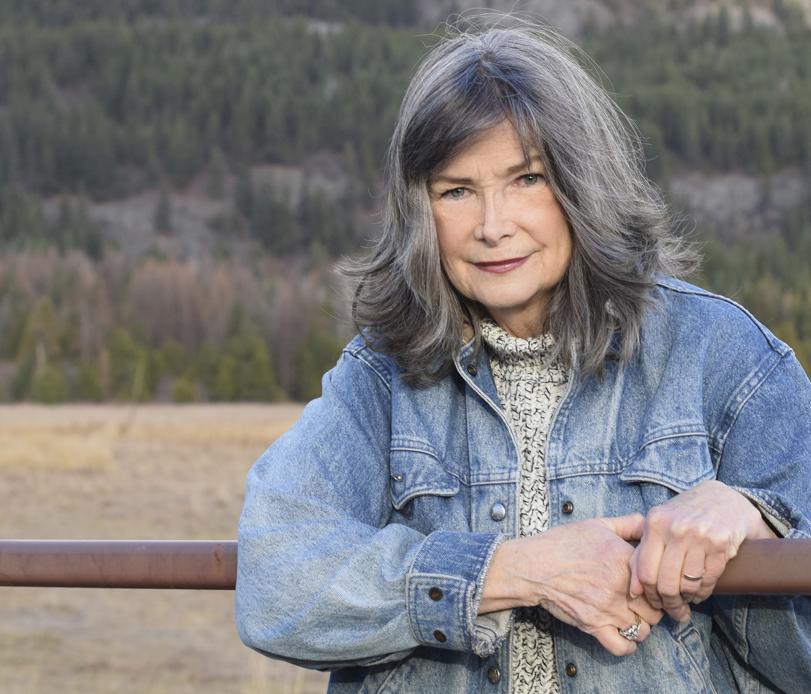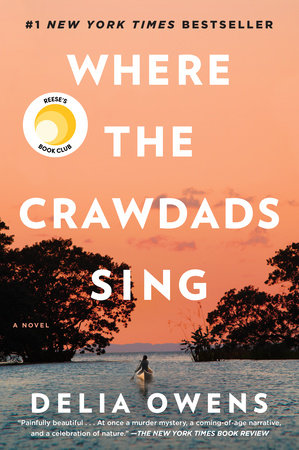
Delia Owens
North Carolina likes to be number one — at everything.
We declare ourselves to be “First in Flight,” but it took a couple of Ohio boys to make that happen.
We declare ourselves to be “First in Freedom” based on the May 20, 1775, Mecklenburg Declaration of Independence — a controversial claim that many historians dispute.
We also love it when books written by North Carolinians or ones set in our state become No. 1 best sellers on The New York Times list.
So this year we are bragging about “Where the Crawdads Sing,” a book set in the fictional eastern North Carolina town of Barkley Cove and the surrounding marshes, coves, and ocean waters.
This book by Delia Owens has been on the Times’ list, usually at No. 1, for 35 weeks.
But there is a problem. We will get to that in a moment, after we consider a few things about the book that explain why it has already sold more than two million copies.
“Where the Crawdads Sing” is literary fiction with strong writing and lovely descriptions of nature’s plants and creatures. A compelling murder mystery with an unexpected ending gives readers a superior entertainment experience.
Owens is a fan of “A Sand County Almanac,” a book of nature-themed essays by Aldo Leopold. She wanted to write a book with a similar nature focus, but one that also has a strong story line.
“Crawdads” is the result. Its success demonstrates that the combination of good writing, a solid story and interesting information about serious topics can be a commercial success.
The book’s central character, Catherine Clark or “Kya,” lives by herself in a shack in the marshes miles away from town. People in Barkley Cove think she is weird, keep their distance, and call her “the Marsh Girl.” She spent only one day in school and cannot read or write. However, because she is smart and diligent, she learns about the nature of the marshes.
She meets Tate Walker, a young man from Barkley Cove. He senses her strengths and shares her love of plants and animals. He teaches her to read and write, and falls in love with her.
When Tate leaves Kya behind to study science at UNC-Chapel Hill, she is devastated. But she rebounds to the seductive charms of Chase Andrews, a town football hero and big shot. Their secret affair is interrupted by Chase’s marriage to another woman, and Kya is again distraught.
Overcoming these disappointments, Kya leverages her reading, writing, and self-taught artistic talents to record the nature world that surrounds her. When Tate, now a scientist, returns to her life, he persuades her to submit her work for publication. That book is a great success, and she writes and illustrates several more.
for publication. That book is a great success, and she writes and illustrates several more.
All this is background for the story that begins on the first pages of the book. Chase Andrews is found dead at the bottom of an old fire tower. Kya is a suspect and is ultimately charged, arrested, put in prison, and tried for Chase’s murder.
The author’s deftness in setting up this situation, and resolving it smoothly, has helped make it a best seller. “Crawdads” gained the attention of beloved actress, Reese Witherspoon. Fox 2000 has acquired film rights and plans for Witherspoon to be the producer.
We can hope that the movie will be shot in North Carolina. But here the book’s problem jumps up. The geography described in the book, with palmettos and deep marshes adjoining ocean coves, seems to fit South Carolina or Georgia coastal landscapes better than North Carolina’s coastlands.
Nevertheless, whatever the moviemakers decide, North Carolinians can bask in the reflected glory of a No. 1 best seller that claims our state for its setting.
 D.G. Martin hosts “North Carolina Bookwatch,” Sunday 11:00 am and Tuesday at 5:00 pm on UNC-TV. The program also airs on the North Carolina Channel Tuesday at 8:00 pm and other times.
D.G. Martin hosts “North Carolina Bookwatch,” Sunday 11:00 am and Tuesday at 5:00 pm on UNC-TV. The program also airs on the North Carolina Channel Tuesday at 8:00 pm and other times.
Related Stories
‹

One on One: Mixing Books and PoliticsYou need to decide which one you’re going to write about and stick to it.” That is what an editor and good friend told me recently. Maybe this friend is right about what I should do with my column, but it is not true that politics and books don’t […]

One on One: The Thinking Man's GrishamI was an excellent lawyer, as honest and effective as you could ever want, and I’m a decent enough person, and despite my mistakes, which–I concede–were hellacious, I deserve better than this misery.” These words that introduce us to the plight of Kevin Moore in Martin Clark’s recent book, “The Substitution Order,” could […]

One on One: A Christmas FoolImagine the Bethlehem Christmas story set in a shopping mall in eastern North Carolina. Think of a pet store in that mall as a manger scene and the manager of the store as a Joseph figure who takes care of a young homeless woman about to deliver a child on Christmas Eve. Now you are […]

One on One: North Carolina Books to the RescueNorth Carolina books that would be good holiday presents for hard-to-give-to people on my list?” I get that question every year about this time. Answering it gives me a chance to spread the word about the work of our state’s diverse authors. So, last minute shoppers, North Carolina books to the rescue! […]

One on One: Grisham Clears The InnocentYears in Prison, 3 Men Cleared in Killing,” a headline in The New York Times streamed last week. Such a story is more and more common as efforts to establish the innocence of people convicted of murder expand throughout the country. In this recent case, three men imprisoned for more than 30 years […]

One on One: A Literary Capital for a DayWhere is the literary capital of North Carolina? Hillsborough? Pittsboro? Chapel Hill? The big cities like Charlotte, Asheville, and Wilmington? Or the Triangle or Triad? It was none of those last weekend when the center of literary activity was Rutherford County where Isothermal Community College’s president and former Lt. Gov. Walter Dalton persuaded three of […]
![]()
One on One: We Are Number 1Number one? That is what North Carolinians love to say about our state. We want our state’s things to be the best, biggest, first, most successful, bestselling, and best loved. Think of the Wright Brothers’ first in flight, the 1775 Mecklenburg Declaration of Independence’s first in freedom, Michael Jordan, and on and on. We are […]
![]()
One on One: 4 Challenging Books That Make For Good Summer ReadingFour new North Carolina books challenge our values and make for good summer reading. Rocky Mount writer Etaf Rum, author of “A Woman Is No Man,” grew up in a Palestinian immigrant family in Brooklyn, N.Y., in the 1990s and 2000s. Her book is based on experiences in that community. We first meet Isra, a 17-year-old […]
![]()
One on One: Four Recent Books Featuring North Carolina IndiansDo you need to know a little more about the early contacts between the Native Americans and the European settlers in North Carolina? Help is on the way with four books and four upcoming programs on “North Carolina Bookwatch.” The first book is “The Secret Token: Myth, Obsession, and the Search for the Lost Colony […]

One on One: Best-Selling CrawdadsNorth Carolina likes to be number one — at everything. We declare ourselves to be “First in Flight,” but it took a couple of Ohio boys to make that happen. We declare ourselves to be “First in Freedom” based on the May 20, 1775, Mecklenburg Declaration of Independence — a controversial claim that many historians […]
›

 for publication. That book is a great success, and she writes and illustrates several more.
for publication. That book is a great success, and she writes and illustrates several more.
 D.G. Martin hosts “North Carolina Bookwatch,” Sunday 11:00 am and Tuesday at 5:00 pm on UNC-TV. The program also airs on the North Carolina Channel Tuesday at 8:00 pm and other times.
D.G. Martin hosts “North Carolina Bookwatch,” Sunday 11:00 am and Tuesday at 5:00 pm on UNC-TV. The program also airs on the North Carolina Channel Tuesday at 8:00 pm and other times.





